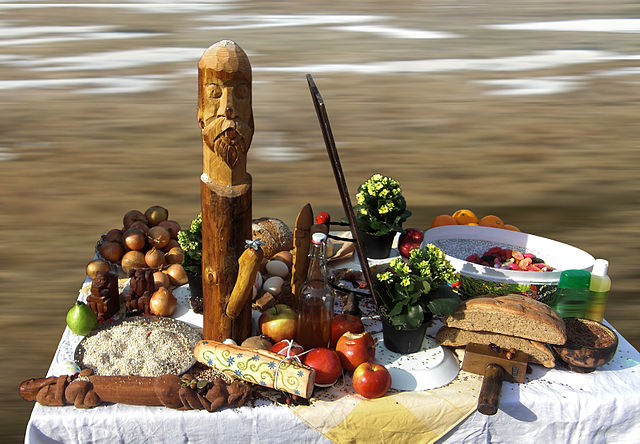Romuva is a neo-pagan movement derived from the traditional mythology of the Lithuanians, attempting to reconstruct the religious rituals of the Lithuanians before their Christianization in 1387. Practitioners of Romuva claim to continue Baltic pagan traditions which survived in folklore, customs and superstition. Romuva is a polytheistic pagan faith which asserts the sanctity of nature and ancestor worship. Practicing the Romuva faith is seen by many adherents as a form of cultural pride, along with celebrating traditional forms of art, retelling Baltic folklore, practicing traditional holidays, playing traditional Baltic music, singing traditional dainos (songs), as well as ecological activism and stewarding sacred places.
Samogitian Sanctuary
Image: Swastik
Modern paganism, also known as contemporary paganism and neopaganism, is a type of religion or family of religions influenced by the various historical pre-Christian beliefs of pre-modern peoples in Europe and adjacent areas of North Africa and the Near East. Although they share similarities, contemporary pagan movements are diverse and as a result, they do not share a single set of beliefs, practices, or texts. Scholars of religion often characterise these traditions as new religious movements. Some academics who study the phenomenon treat it as a movement that is divided into different religions while others characterize it as a single religion of which different pagan faiths are denominations.
Heathen altar for Haustblot in Björkö, Sweden. The larger wooden idol represents the god Frey.
A Heathen shrine to the god Freyr, Sweden, 2010
The Parthenon, an ancient pre-Christian temple in Athens dedicated to the goddess Athena. Strmiska believed that modern pagans in part reappropriate the term "pagan" to honor the cultural achievements of Europe's pre-Christian societies.
Samogitian Sanctuary, a reconstruction of a medieval pagan observatory in Šventoji, Lithuania used by the modern Romuvans





